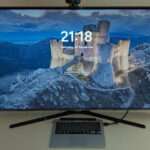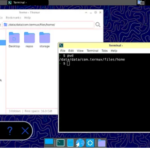LISA Pathfinder is intended to demonstrate the key technologies for LISA, the Laser Interferometer Space Antenna for gravitational waves detection. At the heart of the LISA Pathfinder (LPF) mission lies the high-precision inertial sensor package, the so-called LTP (LISA Technology Package).The LTP package basically consists of two Inertial Sensors and a laser interferometer. Each Inertial Sensor contains a free floating Test Mass (TM), which will ideally follow a purely gravitational trajectory. The positions of the proof masses with respect to the spacecraft will be measured electrostatically (capacitive sensing) using electrodes embedded in the Inertial Sensor (IS) housing. A Drag-Free Control System will cause the satellite to follow the trajectories of the test masses by means of Field Emission Electric Propulsion (FEEP) micro-Newton thrusters. The LTP laser interferometer will provide a measurement of the relative displacement of the TMs, allowing a direct assessment of the differential acceleration of the masses. The top science requirement of LPF is to demonstrate that the differential acceleration along the direct connection line between the centers of mass of the two TMs can be kept below a certain limit. Since the performance goal cannot be verified on the ground, a high level of modeling and detailed simulations are required to ensure the LISA Pathfinder mission success. Therefore, an End-to-End Simulator has been developed, it will be backed by Real-Time Test-Beds (RTB) with hardware in-loop to validate the performance of the sensors, actuators and control systems in a closed/open loop environmental simulation.To this end, a preliminary Real-Time Test-Bed has been built during this work. Test mass tip/tilt angles are represented by piezo actuated tip/tilt mirrors controlled according to the test mass motion as derived from the computed equations of motion. All actuator and sensor models, the spacecraft and test masses nonlinear dynamics, the environmental and internal disturbance models as well as the Drag-Free Algorithm Control System (DFACS) software have been implemented on a dSPACE® real-time computer. A real interferometer, similar to the LTP one, for the readout of the differential TM displacement has been built-up. Furthermore, the complete hardware set-up (consisting of the tip/tilt mirrors and the interferometer) has been calibrated. This Test-Bed represents the first step toward an LTP RTB that can be used for the DFACS closed loop functional testing as well as for the testing of the initial acquisition of the optical metrology system.
IMPLEMENTATION OF A REAL-TIME TEST-BED FOR LISA PATHFINDER
Click to rate this post!
[Total: 0 Average: 0]
Subscribe
Login
0 Comments
Oldest





